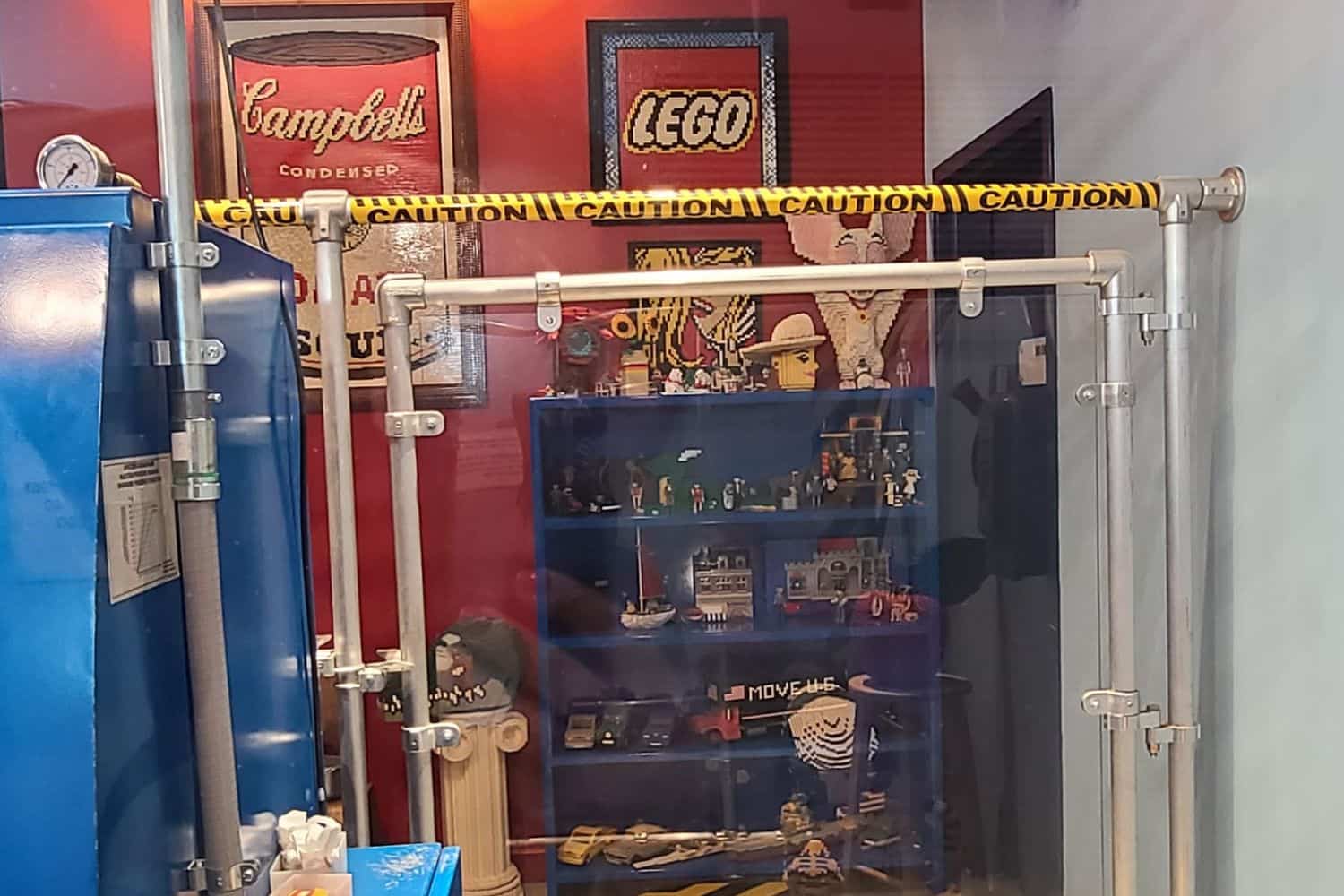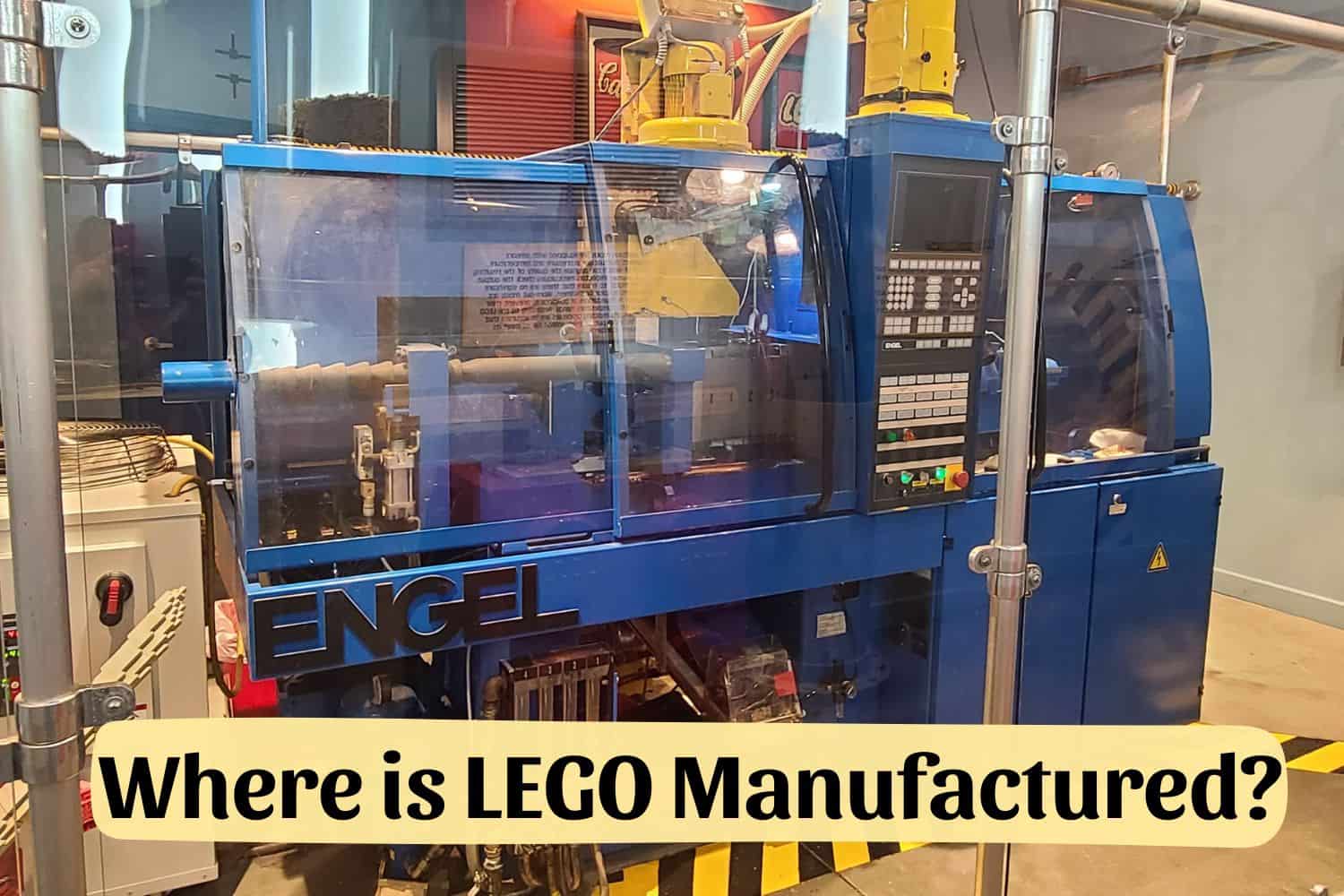Where is LEGO manufactured? Uncover the global manufacturing locations of LEGO and explore how these iconic toys are produced.
Where is LEGO Manufactured?
Toy manufacturing, especially in the case of the universally beloved LEGO bricks, is a magical art form that often captures the imagination much like it did when you opened your first LEGO set.
With its iconic bright colors, satisfying clicks, and endless creative potential, LEGO is more than just a toy; it’s a symbol of innovation and a cultural phenomenon.
However, the actual process of bringing LEGO bricks to market is less well-known, and LEGO enthusiasts often wonder where their favorite building blocks are born.
In this exploration, we’ll go beyond the playsets to discover the global network – where is LEGO manufactured?
Lego bricks are manufactured at various sites globally. Molding takes place in Billund, Denmark; Nyíregyháza, Hungary; Monterrey, Mexico; and recently in Jiaxing, China. Brick decorations and packaging are handled in plants located in the first three countries and Kladno, Czech Republic.
Whether you’re a LEGO fanatic, a toy enthusiast, or just curious about the behind-the-scenes of global manufacturing, this deep-dive is sure to provide an insightful look at one of the world’s most cherished brands.
Where is LEGO Manufactured? – The Origins: LEGO in Billund, Denmark

The story begins in the quaint town of Billund, Denmark, where the LEGO Group’s founding family, Kirk Kristiansen, still maintains control of the company.
This is the hallowed ground where the LEGO brick was first molded and the brand ethos of quality, creativity, and play was born.
The Billund location is not just about preserving LEGO’s history; it is an innovation hub that continually refines the manufacturing process.
From the high-tech molding machines to the continuous quality control, this site remains critical to maintaining the LEGO standard.
A Brick-by-Brick Breakdown of the Process
Molding is where the magic starts, but the process is intricate. Each LEGO brick starts as granulated acrylonitrile butadiene styrene (ABS) plastic that gets heated to precise temperatures.
The molten plastic is injected into molds that give each brick its iconic shape and interlocking studs. This isn’t just about making a toy; it’s about precision engineering.
Maestros of Molding: The Skilled Technicians
Skilled technicians oversee the mold injection molding machines. These individuals are masters at ensuring that each brick comes out flawless, as even the slightest imperfection could impact the brick’s ability to connect with others.
The Science of Stackability: Quality Assurance
Quality assurance is the heartbeat of the process. Robotic arms, lasers, and human inspectors work together to ensure that every LEGO part is up to snuff. If a batch doesn’t meet the rigid standards, it can’t bear the LEGO name.
Expanding the LEGO Universe: Global Manufacturing Sites
Although the heart of LEGO still beats in Billund, it is through its expansion across the globe that the company reaches millions of fans.
The need to meet soaring demand while reducing shipping costs and time led to the creation of new manufacturing centers.
The Growing Enterprise: Expansion into Hungary and Mexico
To diversify its manufacturing risk, LEGO expanded to Nyíregyháza, Hungary, and Monterrey, Mexico. Each of these sites follows the Billund blueprint, maintaining an unwavering commitment to quality and craftsmanship.
Hand-in-Hand with High-Tech
While the manual labor aspect is iconic, these newer sites are far from old-fashioned.
They integrate cutting-edge technologies, from automated packaging to computer-controlled mold-making machines, to ensure speed and efficiency without compromising on the LEGO promise.
The Role of Automation
Automation in LEGO production is not about replacing human workers but about complementing their skills. It helps minimize repetitive tasks and allows employees to focus on more intricate and skilled portions of the process.
Beyond the Block: Environmental Responsibility
The LEGO Group is also making strides in sustainability. Newer manufacturing sites, from the choice of materials to the production methods, are designed to be as environmentally friendly as possible.
LEGO is dedicated to reducing its carbon footprint and has a long-term commitment to achieving sustainable production practices.
Building LEGO in Asia: The Jiaxing Connection
In 2016, LEGO established a new manufacturing site in Jiaxing, China, which marked a significant step in the company’s commitment to meeting the growing demand for its products in Asia.
This state-of-the-art facility employs the latest advancements in production technology and ensures a steady supply of LEGO elements for the bustling Asian market.
The Intricacies of International Production
Operating in China brings not just benefits in terms of location but also a rich pool of new talent and ideas. The Jiaxing plant is a testament to LEGO’s global perspective and its continuous pursuit of excellence in both products and processes.
Cultural Cohesion: Balancing Automation and Craftsmanship
While automation is a crucial part of the production process, each location also maintains a strong tradition of craftsmanship. It’s a delicate balance, ensuring that the human touch isn’t lost in favor of efficiency and volume.
The Human Element
Employing local communities brings a new richness to the LEGO production narrative. The stories of the people who contribute to LEGO’s creation are as vital as the bricks themselves.
The hard work and dedication of staff at the Jiaxing site tie into LEGO’s overarching story of inspiring and nurturing creativity.
The Final Frontier: Decoration and Packaging
The process doesn’t end with molding. Decoration and packaging are just as critical in the LEGO world. The decoration plants in the Czech Republic and packaging facilities across several countries are where the LEGO sets get their final look before distribution.
Artistry in Action: The Decoration Process
Brick decorations are more than just colors and logos; they’re what give LEGO sets their unique character. The decoration process involves intricate printing and stamping technologies that bring the bricks to life.
Custom Creations: Packaging at the Heart
The packaging of LEGO sets and elements is more than just a way to transport the products. It’s about storytelling and protecting the sets until they reach their final destination—your living room floor or playroom table.
Sustainability in Every Box
Packaging is one of the most visible aspects of the LEGO brand’s commitment to sustainability. From eco-friendly designs to the use of recycled materials, the packaging process at LEGO is an extension of the company’s dedication to the environment.
Conclusion: The LEGO Legacy Continues
The art of manufacturing LEGO is a symphony of technology, talent, and tradition that spans continents and cultures. As LEGO continues to innovate and grow, it’s heartening to see the company stay true to its roots while remaining agile and forward-thinking.
The factories aren’t just places where toys are made. They’re the culmination of the dreams of generations past and the foundation for the builders of tomorrow.
By understanding the intricate process behind LEGO’s construction, we gain a deeper appreciation for the company’s commitment to quality and the role each employee, machine, and country plays in the larger LEGO universe.
Next time you pick up a LEGO brick, remember the incredible global journey it took to end up in your hands, ready to be part of your next grand creation.
The world may be the LEGO builder’s oyster, but it’s the human touch and dedication that truly make LEGO the beloved brand it is today.
Thanks for reading our article Where is LEGO Manufactured? If you want to know more information, visit our website here.
Read more:

